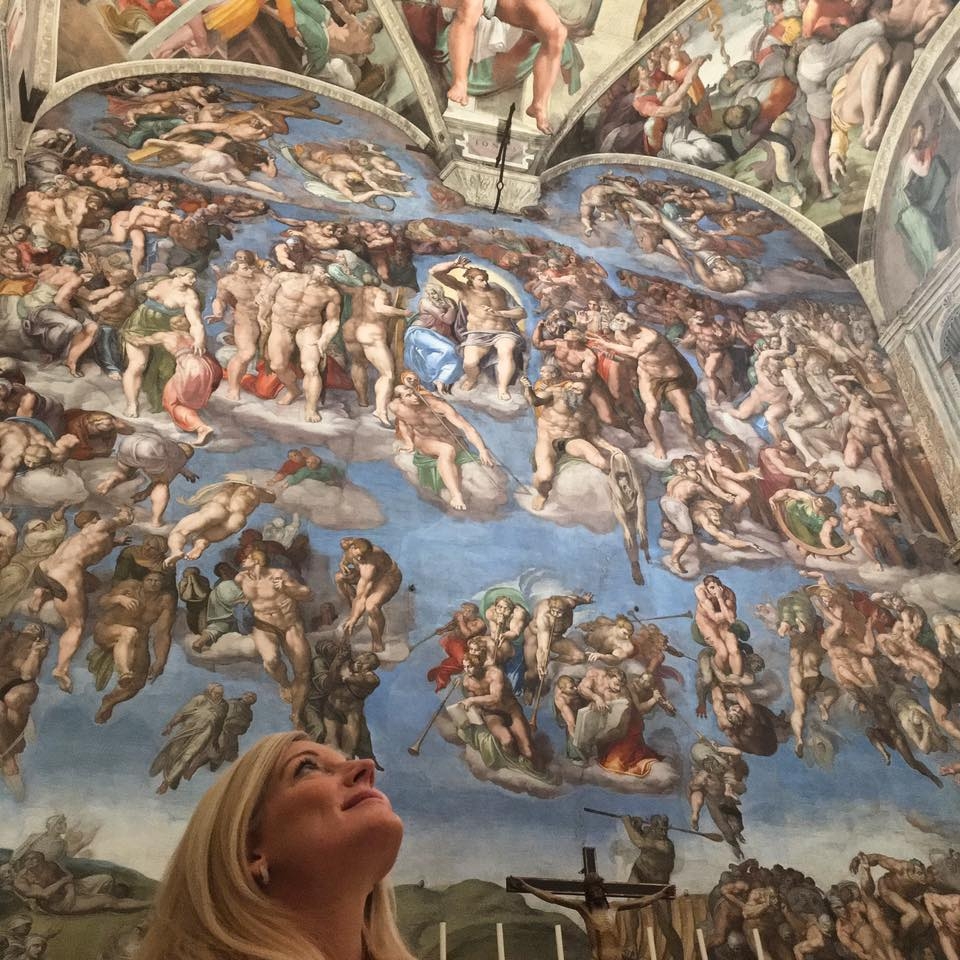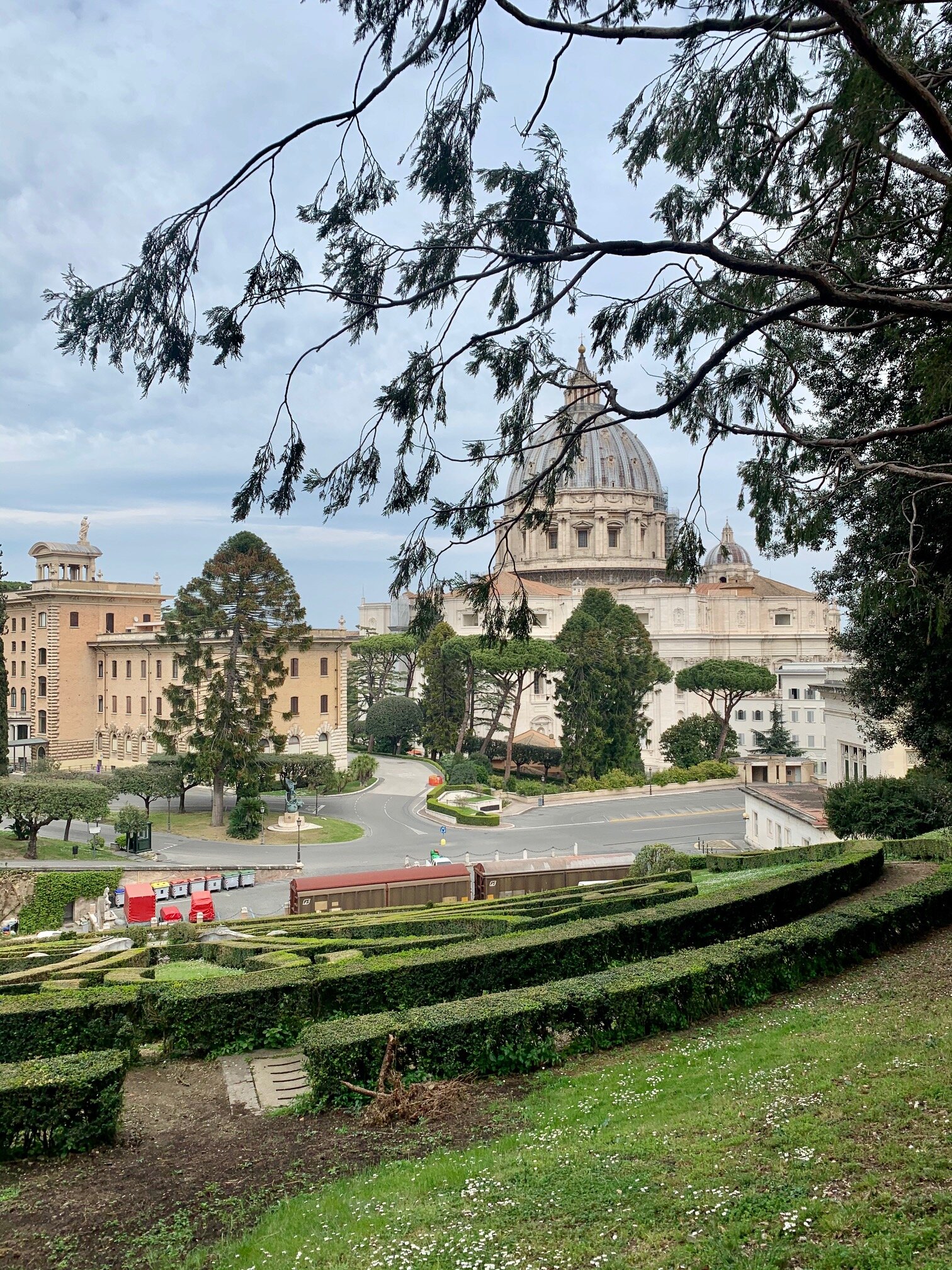The Vatican Railway - Fourteen Fun Facts
1. Under the Lateran Treaty signed in February 1929, Italy guaranteed to construct a railway station in Vatican City and link it to the nearby St. Peter’s station in Rome, all within a year. To achieve this complex feat, the Italians had to build a viaduct to carry the tracks high above Via Gregorio VII (38 meters above sea level), thereby connecting the stations. The first trial locomotive crossing of the Italian-Vatican border occurred in 1932, although the Vatican Railway wasn’t officially opened until 1934.
2. The Coat of Arms of Pope Pius XI (pope from 1922 to 1939) decorate the 17 meter-wide arched wall under which trains traverse the border. Pope Pius XI's plan to have a papal train was never realized.
3. The Vatican Railway system is the shortest in the world. It has two tracks but only one station and one platform. Passengers traverse a mere 624 meters on their voyage from the Vatican station to Roma-San Pietro.
Line length: 0.68 kilometres (0.42 mi)
Track length: 1.19 kilometres (0.74 mi)
4. The Vatican Railway and Station is the “most beautiful in the world” according to Pope Pius XI, perhaps because of its position at the base of the Vatican Gardens and to the other side, a glorious view of Michelangelo’s dome.
5. Two great Sphinx guard the Vatican iron gates. When opened, the giant gates slide apart, taking almost a full minute to inch back inside the recesses of the wall and allow trains to pass between Italy and Vatican City. There is no pedestrian or automobile access via this Vatican entrance.
6. Only one passenger train operates per week, on Saturday mornings, as part of an ongoing collaboration between the Vatican Museums and the Italian Railway. Since 2015, the Vatican Museums have offered a ‘Vatican Full Day by train’ tour, during which visitors take a special electric train from the Vatican City station to the Pontifical Villas in Castel Gandolfo. You may be interested in my review of this Vatican experience.
7. Occasionally freight trains still enter Vatican City. They were more frequent in the past when road freight was far more costly. In addition to the two main railway tracks are two dead-end loading tracks, for freight wagons.
Photo shows goods wagon in front of the tracks with shell-shaped hedge garden above. The tunnel behind is 96.6 meters long.
8. Twenty meters from the gate, lies a grand train station with white travertine facade. It was constructed between 1929 and 1933, and decorated with the expectation that it would be used by popes and VIPs. It also housed a goods import-export office which still exists today.
9. The station building is the only place in the Vatican that was hit during the Second World War. Of course, the destruction has long since been repaired, but one corner retains part of the damage as a reminder.
10. The train station currently houses the Vatican’s duty-free department store, open only to Holy See residents, employees and diplomats, with a wide selection of goods from cosmetics and fashion accessories to computers and white goods. During the papacy of Francis, the tax-free offering has become significantly less luxurious.
11. The Vatican has never employed any railway workers, and any and all train carriages and wagons belong to the Italian Railways.
12. Three popes have used the Vatican Railway, four if you count the fact that Pope John XXIII had the relics of Pope Pius X transported to Venice via train from the Vatican.
- The first was Pope John XXIII in 1962, during his pilgrimage to Loreto and Assisi.
- From 1979 onwards, Pope Saint John Paul II used the Vatican railway to make a handful of symbolic gestures, but did not travel out of the Vatican and beyond Rome until 2002 to Assisi.
- Pope Benedict XVI also used the railway for a pilgrimage to Assisi on 27 October 2011.
13. Pope Francis himself has not taken a train from the Vatican Station. However, in 2014, he warmly welcomed 500 children who traveled by train to the Vatican from Naples as part of a care program for children with family or social problems. Pope Francis also opened up the Papal Summer Villa at Castel Gandolfo to the public and granted access from the Vatican and Rome by a weekly train, inaugurated in 2015.
14. In May 2011, Australia’s first resident Ambassador to the Holy See, Tim Fischer was responsible for reactivating the unused rail line between Vatican City and Italy. He arranged a special train, coined the ‘Caritas Express’, from the Vatican City station to Umbria, to commemorate the 60th anniversary of Caritas. The story made for a chapter in his book “Trains Unlimited”. He revealed in an interview with the Catholic Leader that the train ride raised about $20,000 for victims of earthquakes in Haiti. He said, “It was the first steam train this century to depart from the Pope’s own platform.... The train ran like clockwork.”
Photo courtesy of Caritas
If you enjoyed this article, you may be interesting in reading this piece about my experience of the Vatican Museums’ ‘Vatican Full Day (Plus) by Train’ tour.



















